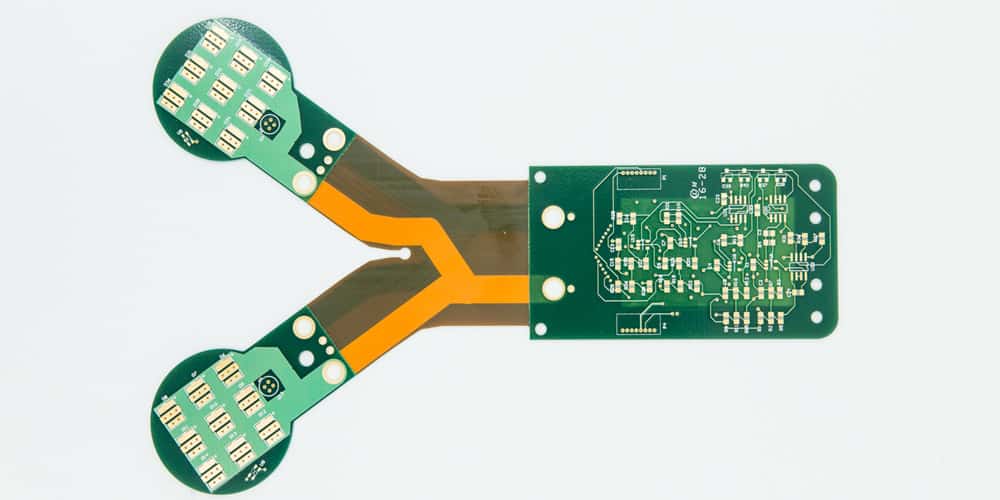The demand for rigid-flex printed circuit boards (PCBs) is on the rise due to the increased utilization of complex and compact electronics in various industries, such as aerospace, automotive, healthcare, and consumer electronics. These mixtures of rigid and flexible PCBs are essential in devices where space-saving, durability, and precision are paramount. Given the importance of rigid-flex PCBs, choosing the right manufacturer is vital to ensure the quality and functionality of your electronic products.
A suitable rigid-flex PCB manufacturer will not only have the necessary expertise and equipment to produce high-quality boards but also be able to cater to your specific design requirements at a reasonable cost. Recognizing the right supplier can be challenging as there are numerous manufacturers in the market, each with distinct capabilities, services, and prices.
In this article, we will discuss nine tips that can guide you in selecting the best rigid-flex PCB manufacturer for your project, ultimately ensuring the success of your electronic product. These tips encompass factors such as certification, production lead time, service offerings, design flexibility, and communication, among others.

Understanding Rigid-Flex PCBs
Rigid-flex printed circuit boards (PCBs) are a hybrid solution that combines the benefits of both rigid and flexible PCBs. These boards are known for their ability to adapt to different space constraints, reduce assembly time, and improve reliability.
Rigid-Flex PCB Benefits
There are several advantages to using rigid-flex PCBs, including:
- Flexibility: The combination of rigid and flexible materials allows for design freedom and enables the PCB to bend and fold as needed in the final product.
- Durability: Rigid-flex PCBs can withstand a higher number of flex cycles, improving the lifespan of the final product.
- Reduced assembly time and cost: Since rigid-flex PCBs are manufactured as a single unit, they eliminate the need for connectors, cables, and additional assembly steps, ultimately reducing production costs.
- Simplified design: Rigid-flex PCBs take up less space than traditional rigid PCBs, allowing designers to create more compact and efficient designs.
Rigid-Flex PCB Applications
Rigid-flex PCBs are used across various industries due to their versatile nature. Some common applications include:
- Aerospace and defense: These sectors require high reliability and performance in extreme environments, making rigid-flex PCBs an ideal choice for their electronics.
- Medical devices: Compact designs and the capability to bend allow rigid-flex PCBs to be used in wearable devices, implants, and other medical equipment.
- Consumer electronics: Rigid-flex PCBs are found in smartphones, cameras, and other wearable devices where space constraints and flexibility are essential.
- Automotive industry: Rigid-flex PCBs can handle harsh environments, such as high temperatures and vibrations, making them suitable for use in various automotive applications like control systems and sensors.
In conclusion, understanding the benefits and applications of rigid-flex PCBs can help you make an informed decision when choosing the right PCB manufacturer for your project.
9 Tips for Choosing a Manufacturer

Experience and Reputation
When selecting a rigid-flex PCB manufacturer, consider their experience and reputation in the industry. An experienced manufacturer with a solid track record can ensure high-quality products and services. Look for customer reviews and testimonials to gauge their reliability and expertise.
Certifications and Quality Control
A reputable manufacturer should have certifications such as ISO or UL, ensuring they adhere to industry standards. Additionally, inquire about their quality control processes, including inspection methodologies and testing equipment, to ensure consistent product quality.
Design Support and Capabilities
Choose a manufacturer with robust design support and capabilities. They should have a team of experienced engineers who can provide guidance on design optimization, DFM (Design for Manufacturability), and DFT (Design for Test) to ensure maximum performance and reduced costs.
Material Selection and Supply Chain
The quality of the PCB’s materials plays a crucial role in its performance. A good manufacturer should offer a variety of materials and have a reliable supply chain. Inquire about their preferred suppliers and the materials they recommend for your specific application.
Manufacturing Lead Times
Timely delivery is essential for any project. Choose a manufacturer with reasonable lead times to ensure deadlines are met. Even more, opt for a manufacturer that has backup plans in place to address unexpected issues during production.
Technical Support
A reliable manufacturer should provide comprehensive technical support, including pre-sales consultation and post-sales assistance. Assess their responsiveness, expertise, and commitment to customer satisfaction.
Prototype Services
Prototype services are crucial for identifying potential design flaws and perfecting your PCBs. Select a manufacturer that offers quick and cost-effective prototype options, helping you streamline the development process.
Cost Considerations
Always compare pricing among different manufacturers. Keep in mind that low prices should not compromise quality. Strike a balance between cost and quality to get the most value for your money.
Communication and Transparency
Effective communication is essential in any business relationship. Choose a manufacturer who is easy to communicate with and provides frequent updates throughout the production process. Transparency should be evident in their pricing, lead times, and quality control measures.
Conclusion
In summary, selecting the right rigid-flex PCB manufacturer is crucial for ensuring the success of your electronic projects. Keeping the following tips in mind will help you make an informed decision:
- Check the manufacturer’s experience and reputation.
- Evaluate their technical capabilities and facilities.
- Inquire about their quality control and certifications.
- Consider their customer support and communication.
- Analyze their design support and DFM services.
- Look into their prototyping and production capabilities.
- Assess their delivery timeframes and logistics.
- Examine their pricing structure and added value.
- Request for customer testimonials or case studies.
Remember, a trustworthy and reliable rigid-flex PCB manufacturer will offer transparency and collaboration throughout the entire process, allowing you to achieve the best possible outcome for your project.

